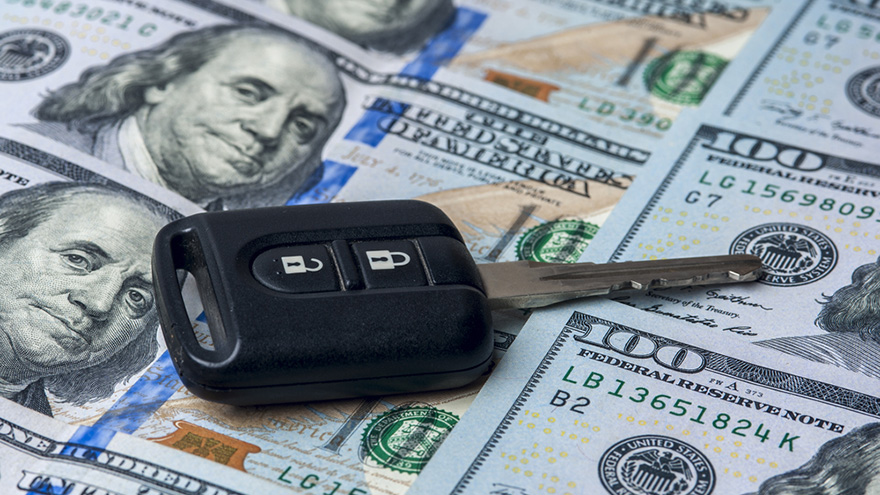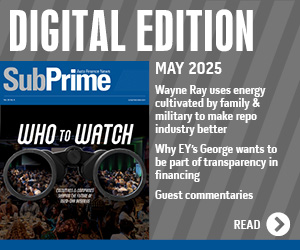Davis & Gilbert experts finds 4 signs of subprime auto ABS market vulnerability

As S&P Global Ratings noticed collateral performance in the U.S. subprime auto loan asset-backed securities (ABS) market deteriorated moderately on a sequential basis in August, Davis & Gilbert’s Insolvency, Creditors’ Rights & Financial Products Practice Group fears investors could be in for a surprise if that market segment makes a more notable move.
First, S&P Global Ratings indicated the subprime net loss rate increased to 7.95 percent in August 2017 from 7.38 percent in July but decreased year-over-year from 8.35 percent. This development is largely because a high volume of new subprime auto loan ABS deals have entered its composite reading since last year, which increased the outstanding balance of the collateral.
Between August of last year and the same month this year, analysts noted about 35 new deals with a total collateral amount of approximately $17 billion were added to their index. These additions pushed the outstanding collateral amount up to approximately $35.6 billion compared to $32.0 billion a year earlier.
“The rise in new-issue deals diluted the weighted net loss rate year over year because the transactions have lower losses and contribute higher value to weights during their initial stage,” S&P Global Ratings explained in a report shared with SubPrime Auto Finance News.
“As these transactions age, losses will increase — a trend we also often encounter in companies' managed portfolio loss statistics. As a result, we believe static pool vintage analysis provides more meaningful insight into actual performance trends,” analysts continued.
Meanwhile, the growth of the subprime auto ABS market is what’s concerning Davis & Gilbert partner Joseph Cioffi, an authority on loan and securitization markets. Cioffi has found that credit enhancements supporting subprime auto asset-backed securities (ABS) do not necessarily provide the same level of protection as credit enhancements supporting pre-financial crisis era subprime residential asset-backed securities (RMBS), “leaving them more vulnerable to market shifts and shocks than many realize.”
These observations were made on a newly launched blog, the Credit Chronometer, in which Cioffi and team will be analyzing economic, market and political events that shape the legal landscape, and impact loan and structured credit markets, including those for auto loans, marketplace lending (peer-to- peer), student loans, mortgage loans and Property Assessed Clean Energy (PACE) financing.
In a blog post, Cioffi noted that the subprime mortgage collapse left clues for the future of subprime auto ABS.
“Credit enhancements in those deals could not always fully absorb losses from the real estate crash, and its impact on loan performance and recoveries,” Cioffi said. “Subprime auto ABS makes no such mistake regarding vehicles, but the corollary to the assumption of never ending real estate appreciation may be the presumed continued performance by auto loan borrowers.”
Cioffi has a warning for those who structure deals with too heavy a reliance on excess spread. “There are a number of hazard signs on this front, including easier credit as a result of softness in the auto sales market, growing household debt and now, a new potential disruptor, climate change.”
While the auto finance industry spent consider effort refuting thoughts about a “subprime bubble” and correlations to the mortgage meltdown, Cioffi elaborated about his analysis in a message to SubPrime Auto Finance News.
“The term ‘bubble’ has expanded to become a loaded term that pushes folks to the extreme edges of the debate, leaving no room for anyone to see the other side,” Cioffi said. “A bubble means that the value isn’t there to support the pricing, and for subprime auto, the question often gets answered at too high a level. It has resulted in a lot of endless loop type of questioning that hasn’t advanced the industry — experts cherry-pick similarities or differences to subprime mortgages to support a position either way.
“At Credit Chronometer, we’ve taken a more disciplined approach by identifying 10 factors that contributed to the subprime mortgage crisis — key indicators of crisis that exist within lending practices, securitization practices and the underlying auto market — and we’re continuing to gauge their presence in subprime auto,” he continued. “When you look at the indicators of crisis objectively you could better determine pricing – in many situations the securities could better reflect the risks.”
As Cioffi explained, the Credit Chronometer presents the “Subprime Auto Loan Crisis Chronometer” to depict the risk of a crisis, which Cioffi defines as a “battle over loss allocation.” As events impact the subprime auto market, the Subprime Auto Loan Crisis Chronometer’s bright yellow gauges will show the current level of risk. As of today, the Subprime Auto Loan Crisis Chronometer is set at:
• Lending practices: Moderate-High
• ABS practices: Moderate
• Auto market: High
• Risk of loss allocation battles: Moderate
To avoid a subprime auto crisis, Cioffi urges, “Investors should recognize that relative to subprime RMBS, overcollateralization rates are not exceedingly high, given the equity cushion that was assumed to have existed in homes backing RMBS. Although investors have demanded credit enhancements that correlate to pool risk, a combination of loose lending and rising negative equity creates the prospect that risk allocation battles are on the horizon.”
SubPrime Auto Finance News closed its opportunity with Cioffi by asking how investors balance the search for yield against the risk in auto ABS?
“As we note in our analysis found on the Credit Chronometer site, lending practices are divided at this point, with some chasing riskier borrowers and others following a more conservative approach,” Cioffi said. “The main thing is for investors to be aware of where the collateral comes from. Risk is not necessarily a bad thing, so long as it is disclosed so that it could be appropriately priced.”


